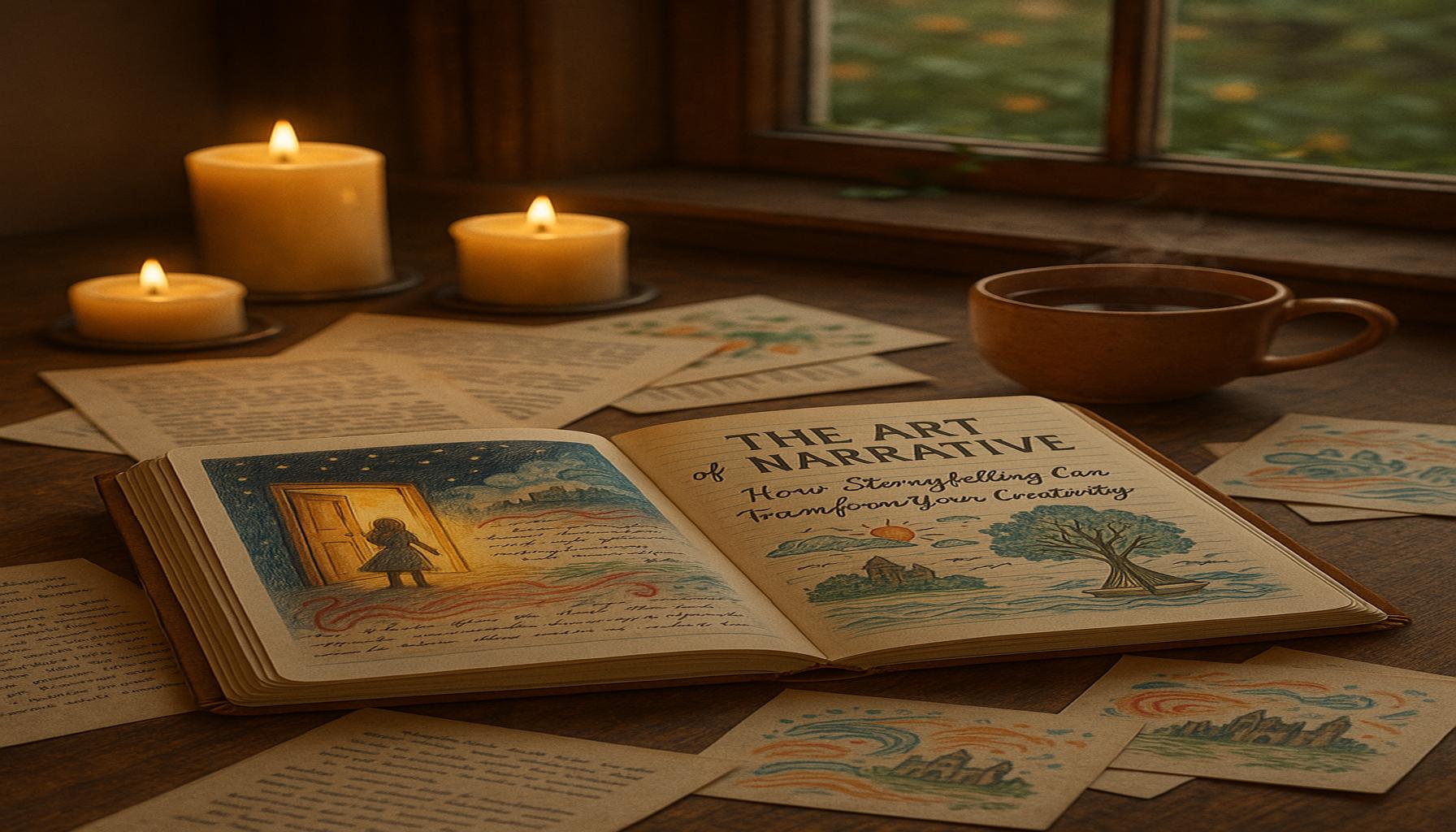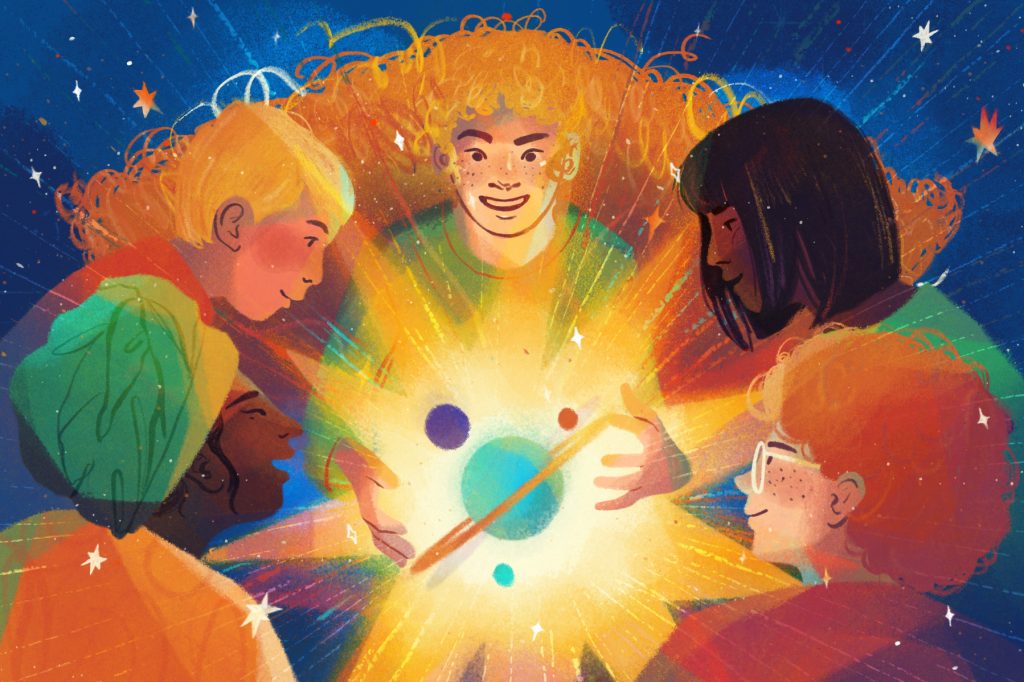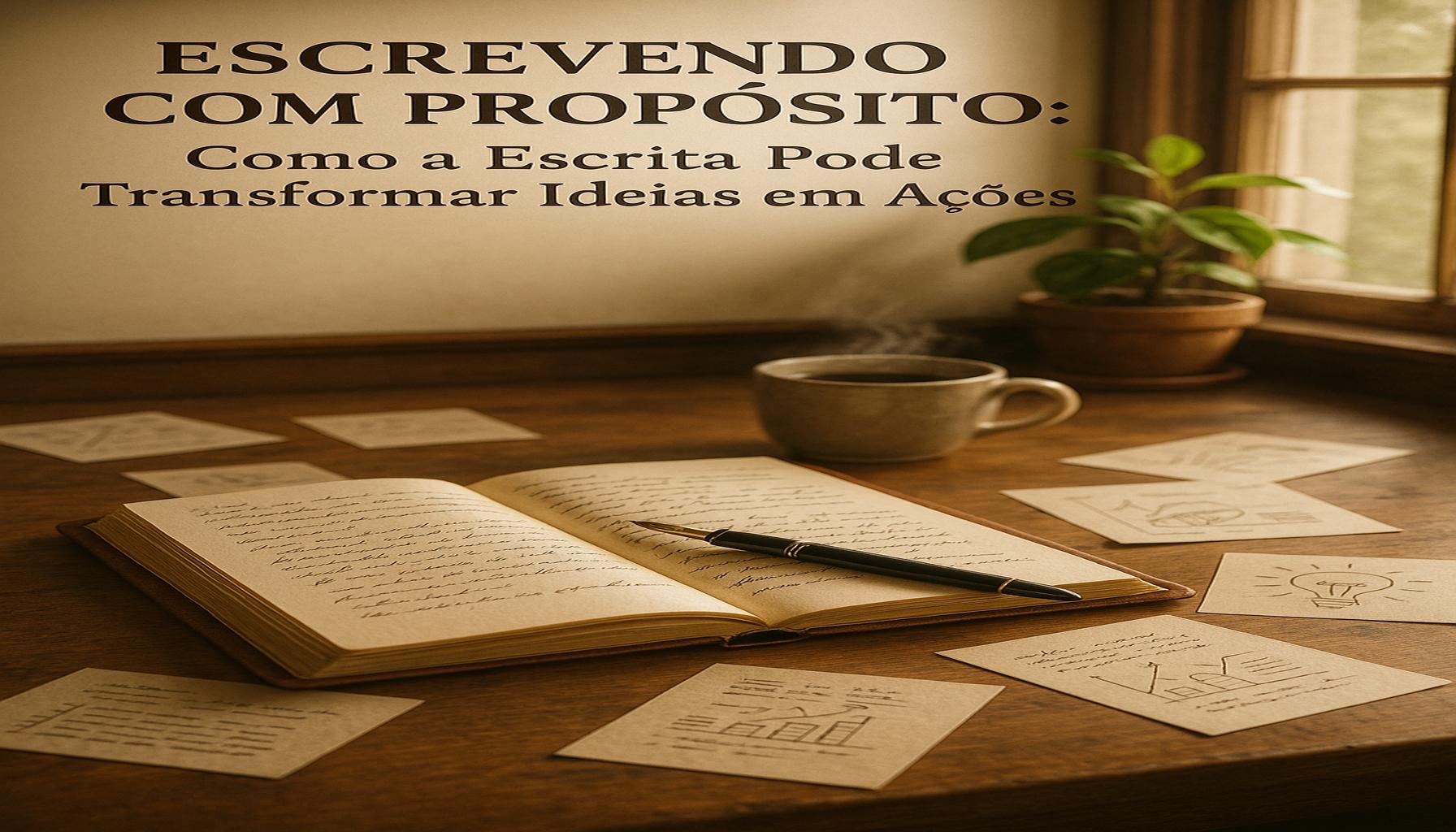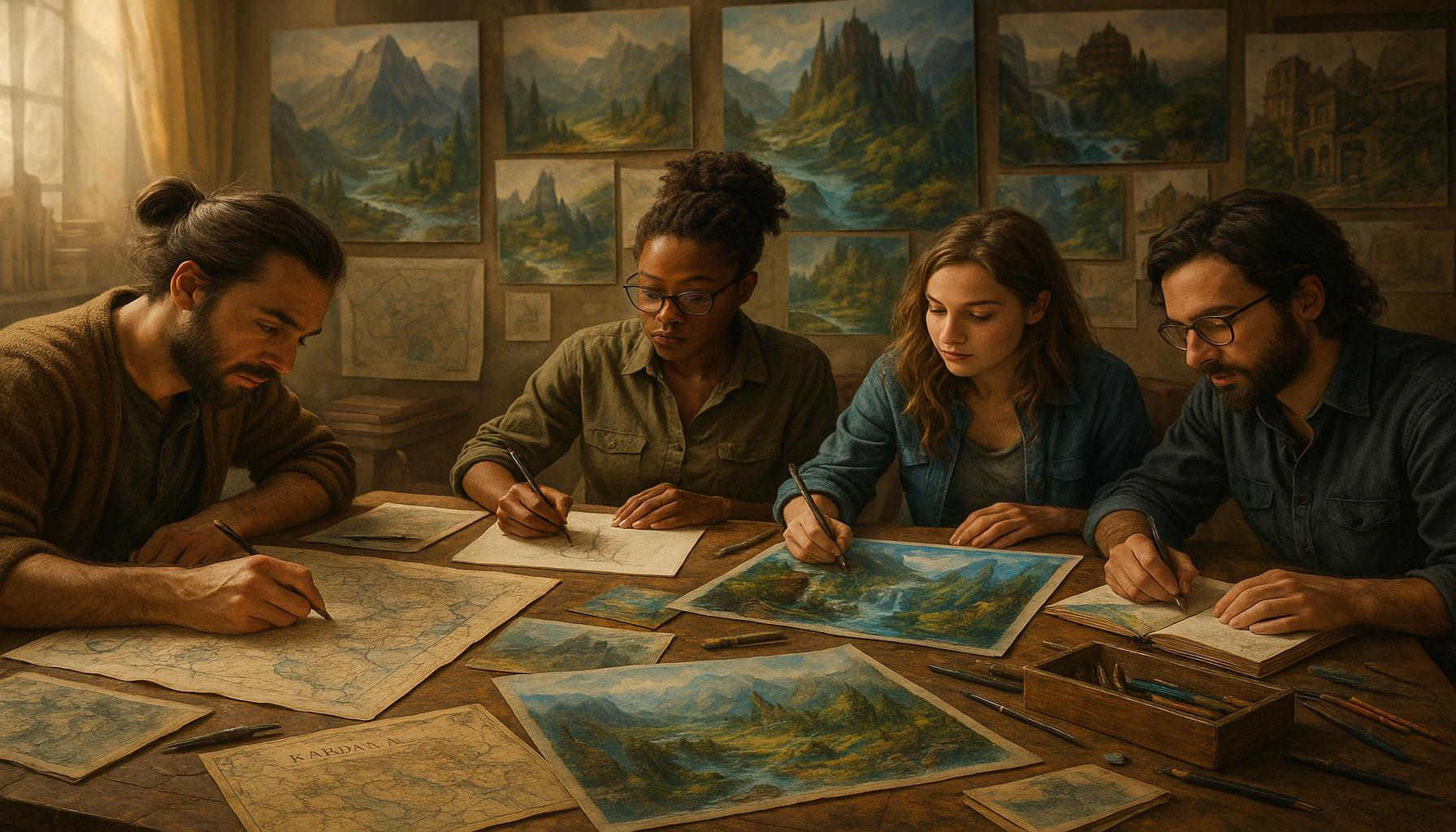The Art of Storytelling: How Telling Stories Can Transform Your Creativity

Unlocking Creativity Through Storytelling
Stories have an unparalleled ability to captivate our minds and inspire our hearts. They serve not only as entertainment but also as a powerful avenue for creativity and innovation. By embracing the art of storytelling, we open the door to transformative experiences that can elevate our creative endeavors and enrich our interactions across various domains.
Consider how storytelling impacts various areas of life, often acting as a bridge connecting individuals and communities:
- Business: In an increasingly competitive marketplace, companies have discovered the value of narratives to resonate deeply with their customers. For instance, successful brands like Airbnb and Nike effectively use storytelling in their marketing campaigns to create emotional bonds. By sharing customer testimonials or impactful stories, they forge stronger relationships, encouraging brand loyalty and engagement.
- Education: In classrooms across the United States, teachers employ storytelling techniques to transform mundane lessons into unforgettable experiences. For example, by weaving historical facts into a narrative about a significant event, educators make the subject more relatable, allowing students to connect with the material on a personal level. This narrative-driven approach can improve retention and foster a love for learning.
- Art: Artists, writers, and filmmakers draw upon the power of compelling stories to express complex themes and evoke emotions. A film like “The Pursuit of Happyness,” which is based on a true story, not only entertains but also inspires countless viewers to persevere through their struggles. The rich narratives in literature, visual arts, and cinema often serve as mirrors reflecting societal values and issues.
The Impact of Storytelling on Creative Thinking
Storytelling enhances creative thinking by encouraging individuals to think outside the box. When we construct stories, we explore different perspectives and possibilities, igniting our imagination. For example, writing prompts that challenge one to create a story from a simple image can result in unexpected and innovative ideas.
Narrative Structures and Creative Expression
The structure of a narrative can significantly influence creative expression. Traditional frameworks, such as the “hero’s journey” outlined by Joseph Campbell, provide a blueprint for crafting compelling stories. Understanding these structures helps creators communicate their messages more effectively, enhancing their works’ emotional and intellectual impact.
Practical Techniques to Incorporate Storytelling
To incorporate storytelling into your daily routine, consider the following techniques:

- Journaling: By documenting personal experiences in a narrative format, you not only practice your storytelling skills but also gain insight into your life journey.
- Participate in storytelling workshops: Join local or online groups where you can share stories and receive constructive feedback. These platforms provide a supportive environment for honing your craft.
- Utilize social media: Platforms such as Instagram and TikTok allow you to tell stories visually. Utilize these channels to create engaging narratives that resonate with your audience.
As we journey through the realms of creativity unlocked by storytelling, you’ll discover that every story told is a step towards uncharted creative territories. From personal anecdotes to grand narratives, the power of stories is a key that can lead to new ideas and innovations. Join us as we dive deep into the transformative nature of storytelling, embracing the potential it holds to shape our lives and communities.
DIVE DEEPER: Click here to discover the evolution of digital art
The Role of Storytelling in Personal Development
Storytelling is more than just a tool for communication; it is a fundamental element of personal development. When we share our experiences through stories, we are not only recounting events but also processing our emotions and reflections. This storytelling practice allows individuals to examine their lives from a different perspective, leading to newfound insights that can spark creative growth.
Incorporating storytelling techniques into your daily life can be transformative. Consider how narrating your own personal journey can help clarify your goals and aspirations. This reflective storytelling can illuminate your path, revealing underlying themes and challenges that may influence your creative output. After all, as the famous author Kurt Vonnegut once said, “We are what we pretend to be, so we must be careful about what we pretend to be.”
The Therapeutic Benefits of Storytelling
From a psychological perspective, storytelling acts as a therapeutic outlet, enabling individuals to process trauma and complicated emotions. Researchers have noted that sharing personal narratives can reduce stress and promote mental health. For instance, expressive writing and storytelling workshops encourage participants to explore their challenges and victories, building resilience in the face of adversity. These therapeutic practices highlight the profound impact storytelling can have on our emotions, allowing us to reconnect with our sense of self and creativity.
How Stories Foster Empathy and Connection
Another powerful aspect of storytelling is its ability to cultivate empathy. When we open ourselves up to narratives that differ from our own, we expand our understanding of the human experience. This engagement helps break down barriers and fosters deeper connections between individuals. A study from the University of transportation in 2014 found that participants who engaged with stories displaying emotional content were more likely to exhibit altruistic behavior. This indicates that through storytelling, we not only comprehend but also feel and resonate with the experiences of others.
Moreover, embracing storytelling in various contexts can lead to enriched interpersonal relationships. Whether in personal conversations or professional environments, sharing stories invites openness and vulnerability, strengthening bonds and enhancing collaboration. For example, in team settings, leaders who share authentic stories about their journeys can inspire and motivate their teams, creating a unified vision that sparks creativity and innovation.
Connecting Through Shared Narratives
Shared narratives can create a strong sense of community, encouraging diverse groups to celebrate their differences while identifying commonalities. This connection is especially relevant in multicultural societies like the United States, where stories from different backgrounds contribute to a rich tapestry of experiences. By learning to appreciate and engage with varying narratives, we not only broaden our worldviews but also enhance our creative output, as diverse perspectives often lead to innovative thinking.
As we journey into the heart of storytelling and its profound implications for creativity, it is essential to recognize the multifaceted nature of this art form. By understanding its role in personal development, emotional healing, and community-building, we set the stage for exploration and growth. Join us in discovering how to fully leverage storytelling to unlock your artistic potential and unleash your creativity.
The Art of Storytelling: How Telling Stories Can Transform Your Creativity
Storytelling is not merely about entertainment; it is a powerful tool that can profoundly transform your creativity. Through engaging narratives, individuals can tap into their imagination, leading to innovative ideas and solutions. Here, we explore how the gift of storytelling enriches creative processes.
| Category | Details |
|---|---|
| Enhanced Emotional Connection | Storytelling fosters deeper emotional connections, allowing creators to resonate with their audience on a personal level. |
| Innovative Problem-Solving | As narratives unfold, they present various perspectives, encouraging out-of-the-box thinking and inventive solutions to challenges. |
Moreover, storytelling cultivates a culture of collaboration and shared experiences. When people share their stories, it can lead to increased teamwork and understanding among peers. In creative environments where diverse backgrounds meet, the exchange of stories can spark new ideas and inspire collective projects.
This transformative influence of storytelling extends beyond the realms of art and literature. In business, for instance, companies leverage storytelling to build strong brands and connect with consumers. By crafting compelling stories around their products, they create narrative-driven marketing that resonates with potential customers, illustrating the profound impact storytelling can have in various fields.
Ultimately, mastering the art of storytelling is a vital skill that can unlock new dimensions of creativity and innovation, inviting individuals to explore and express their unique narratives.
DIVE DEEPER: Click here to discover the power of musical collaboration
The Impact of Storytelling on Professional Development
In the world of business, storytelling is increasingly recognized as a vital skill that can elevate professionals and organizations alike. As companies strive to connect with customers in meaningful ways, the ability to craft a compelling narrative becomes paramount. Storytelling can humanize a brand, allowing potential clients to relate to the company’s mission and values, which ultimately drives loyalty and engagement.
Crafting a Brand Narrative
Every brand has a story, and how well that story is communicated can make all the difference. A strong brand narrative encapsulates the company’s journey, values, and aspirational goals. For example, consider the story of TOMS Shoes, which started with the simple mission of providing shoes to children in need. Their narrative of giving back resonates deeply with customers, transforming buyers into advocates. As we simulate real connections through storytelling, businesses can trigger emotional responses, leading to deeper customer relationships and increased creativity in marketing strategies.
Utilizing Storytelling in Leadership
Leaders who leverage storytelling create an environment where team members feel invested in the vision and motivated to contribute. Sharing personal anecdotes about successes and failures fosters a culture of openness and honesty. A 2019 study published in the Harvard Business Review revealed that leaders who tell stories are viewed as more persuasive, trustworthy, and approachable by their teams. By incorporating storytelling into leadership techniques, individuals can inspire innovation and encourage team collaboration—essential ingredients for creative problem-solving.
Enhancing Communication Skills Through Storytelling
In addition to fostering genuine connections, storytelling sharpens communication skills, particularly in persuasive writing and public speaking. When professionals can articulate their ideas through engaging narratives, they capture their audience’s attention, making it easier to convey complex concepts. A case study by the Public Relations Society of America highlighted that professionals who utilized storytelling improved their presentations’ effectiveness, leading to successful client outcomes.
Storytelling as a Catalyst for Innovation
The relationship between storytelling and innovation is potent, as creative storytelling stimulates new ideas and alternative approaches. Storytellers often step outside traditional boundaries, enabling them to visualize innovative solutions or products. Brainstorming sessions that incorporate storytelling techniques encourage participants to construct narratives around ideas, allowing for a more imaginative exploration of their concepts.
Case Studies in Creative Innovation
Consider how IDEO, a renowned design consultancy, utilizes storytelling in its design process. They advocate using “storyboards” to visualize concepts, allowing teams to flesh out products and services dynamically. This practice has led to groundbreaking innovations, such as the design of the first Apple computer interface. By using stories to map user experiences, IDEO captures the essence of customer needs, ultimately driving creative breakthroughs.
The Role of Digital Storytelling
In today’s digital age, storytelling takes on new forms, with platforms like social media, podcasts, and videos amplifying the reach of personal narratives. Influencers and content creators effectively utilize these mediums to spread their stories, creating authentic connections with their audience while inspiring others in the creative realm. This shift toward digital storytelling highlights the need for contemporary practitioners to hone their skills in engaging and persuasive narratives.
Ultimately, as the realms of creativity, business, and personal growth continue to intersect, the art of storytelling emerges as a powerful tool for transformation. Embracing this practice can delve into the depths of our imagination, propelling us toward uncharted territories in both personal and professional landscapes.
DIVE DEEPER: Click here to explore the evolution of craftsmanship
Conclusion: The Transformative Power of Storytelling
In summation, the art of storytelling stands as a powerful instrument that can profoundly reshape one’s creativity across various spheres of life. With its capacity to forge deep emotional connections and foster engagement, storytelling transcends traditional boundaries, whether in the corporate domain or personal growth scenarios. The essential role of narratives in crafting brand identities, enriching leadership, and enhancing communication cannot be overstated. As evidenced by leading companies and visionary leaders, the infusion of storytelling into professional practices translates into innovative approaches that resonate with target audiences.
Moreover, the ascent of digital storytelling in today’s interconnected world opens new avenues for creative expression. From vlogs to podcasts, these platforms offer vast potential to not only share experiences but also to inspire communities. As individuals hone their storytelling abilities, they unlock a deeper understanding of their own narratives, fostering a creative mindset that encourages risk-taking and experimentation.
In conclusion, embracing storytelling as a core element of creativity is not merely a useful practice; it is a transformative journey that invites us to explore narratives that inform and inspire. By weaving storytelling into our daily interactions and professional pursuits, we not only enhance our creativity but also contribute to a collective tapestry where every story matters. Therefore, it is imperative for anyone looking to elevate their creative endeavors to fully harness the power of storytelling, paving the way for innovation, connection, and growth.



